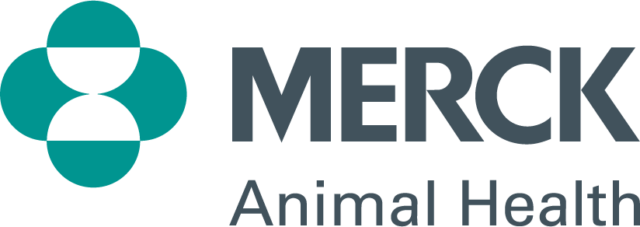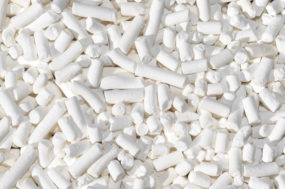Sweden has promoted breeding for healthy cows, maintaining high production for several decades.
In 2006, a breeding value for claw health based on data recorded by claw trimmers started to be included in the health profile.“Lameness is the most costly disorder of dairy cows in the U.S.,” says professor Chuck Guard, a recognized expert on cattle hoof care. Indirect breeding for “feet and legs” will not help to prevent claw disorders in dairy cattle. The Swedish breeding value “claw health” works on a direct way to prevent lameness. A bull will get a higher breeding value for claw health if his daughters have fewer claw disorders and vice versa.
Lameness has a positive genetic correlation with milk and protein yield. So breeding for increased milk and protein yield affects hoof health negatively, unless resistance is included in the selection criteria.
Dairy cows that can walk freely and easily are very important. Good hoof health is not only important for the cow, but also for the farmer. The consequences of lameness in a cow are significant. The economic cost from a lame cow because of a sole ulcer is around $600. Indirect costs are reduced milk production, culling/replacement cost, reduced fertility and time dedicated to manage lame cows. There is a negative impact on the cow’s welfare as she is in pain.
Guard says, “Herdsmen underestimate the number of lame animals. There are 2.5 times more lame cows than producers thought were present in their herds; between 15 and 25 percent of the dairy cows are lame.”
However, dairy farmers should not overestimate the role of breeding; feeding and management are most important in a short perspective. Breeding is a long-term investment.
“But many small steps accumulate into one big step,” says Dr. Hans Stålhammar, chief geneticist of Viking Genetics.
Type traits are not enough
“Breeding for type traits like foot angle or a better rear leg side view will not help to reduce hoof problems in dairy cattle,” says Dr. Jan-Åke Eriksson, the researcher responsible for breeding at the Swedish Dairy Association.
Research at the Swedish Agricultural University has shown that the genetic relationship between feet and leg type traits and hoof disorders does not correlate for most traits in Swedish Holstein or low for Swedish Red. Thus, indirect selection for better hoof health using type trait data was not found possible. This conclusion is supported by studies in the Netherlands. The following traits were included in this Swedish research: rear leg side view, rear leg rear view, hock quality, bone structure and foot angle.
Although the heritability of the combined type traits from feet and legs is relatively low, locomotion may be a good indicator for developing hoof disorders at a later stage in life. However, locomotion is difficult to measure.
Moreover, our recent research on 108 Swedish bulls born in 1999-2001 indicated that there was no genetic correlation between the overall breeding values type traits “feet and legs” and longevity. So breeding for type traits, “feet and legs,” does not contribute to an increase in the proportion of cows that calved a second, third and fourth time, as is the definition of longevity in Sweden.
Hoof health
A rather large number of Swedish hoof trimmers record the hoof disorders of every cow in the herd at maintenance hoof trimming. Monthly almost 20,000 cows are scored. This data is used to retrieve an estimated breeding value for hoof health and is presented six months after the first total merit index. Four main disorders are included in the breeding value (see Table 1 “How does it work?”) Sole ulcer counts for 50 percent of the breeding value because of its high economic and welfare value.
The system works in a direct way: A bull will get a lower breeding value for hoof health if his daughters have more hoof disorders. There is a large variation in hoof health between the bulls, which means that the trait hoof health can improve through selection. Although the heritability for hoof disorders is rather low in comparison with milk production, it is higher than for other diseases such as mastitis. The heritability is sufficient to justify breeding for better hoof health.
Our research shows that there is a clear correlation between the Swedish breeding value “hoof health” and longevity. Thus, breeding for better hoof health increases the longevity of the cows.
Stålhammar says, “Hoof health is not included in the Nordic Total Merit Index because the breeding value is rather new. We cannot yet give an economic value to it. But research shows that there is a clear correlation between the Swedish breeding value ‘hoof/claw health’ and longevity. Thus, breeding for better hoof health increases the longevity of the cows. That means that indirect hoof health is included in the Nordic Total Merit Index through longevity.
“Hoof health is additional information used in the mating plans. When there is more information about the economic value, the plan is to include the trait as a single trait or in the overall ‘feet and legs’ or in the ‘other diseases’ in the Nordic Total Merit Index.
“Next year (2010) Finland and Denmark will join us in the registering of claw disorders so we can create a breeding value hoof/claw health for these countries.”
Sires There are American bulls with a breeding value for claw health in Sweden (see Figure 1). In Sweden the average is 100 and the standard deviation is 10. This means that a bull with or more than 120 is at the top 2.5 percent of the list. This is very high.
A clear example of a bull that shows that the combined type traits “feet and legs” are not related with hoof health can be seen on the proof of the Swedish Holstein bull Berte, 122 for hoof/claw health and 82 for feet and legs. Berte also has an excellent daughter for fertility (131) and very good longevity (125).
In the Swedish Red breed, Brattbacka is a good example, 122 for claw health and 94 for legs, with a good longevity and fertility. The heritability seems to be good. Brattbacka has four sons with an average breeding value hoof health of 116, his grandson Lars Larsgård also has good hoof health. O Brolin is another example of a Swedish Red bull with good hoof health.
Using a bull with a Swedish breeding value of more than 100 for claw health, the daughters of this bull will have less chance of getting lame. Preventing just one lame cow means a more enjoyable job and can save up to $600 a year! PD
Bertel Kon
Sire Analyst
Viking Genetics
bertel.kon@vikinggenetics.com





